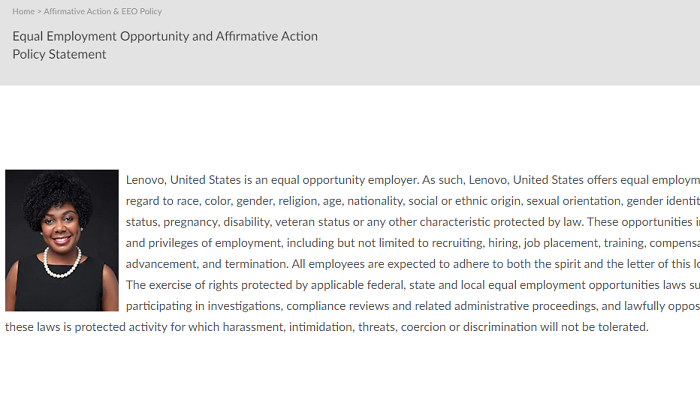In the tapestry of contemporary society, the interplay between diversity and inclusion often takes center stage. The question arises: Are Affirmative Action Plans still required? As organizational structures evolve, understanding the necessity and implications of such plans becomes paramount. This article delves into the nuances of affirmative action, examining its history, relevance, and the transformative paradigm of workplace diversity.
Initially birthed out of a need to rectify systemic inequalities, affirmative action aimed to level the playing field for marginalized communities. It emerged primarily during the civil rights era, a response to discriminatory practices that stifled opportunities for individuals based on race, gender, and other excluded characteristics. These plans were not mere policies; they represented a moral obligation to correct historical injustices while fostering a more equitable professional realm.
However, as we navigate through a complex socio-political landscape, the relevance of affirmative action plans has been scrutinized. Proponents argue that they remain essential, while critics assert that they perpetuate division rather than harmony. To untangle this conundrum, it’s critical to explore the diverse dimensions of affirmative action and its impacts on today’s workforce.
One critical aspect of affirmative action plans is their multifaceted nature. These plans often encompass various categories of diversity, including race, gender, age, sexual orientation, and disability status. Organizations implement plans that not only aim to enhance representation but also to foster an inclusive culture—a space where distinct identities are honored, and every individual’s contribution is valued.
Yet, in recent years, the conversation around affirmative action has evolved. Some organizations have transitioned to more holistic approaches, such as Diversity and Inclusion (D&I) initiatives. These programs champion a broader scope—focusing on creating an inclusive environment that transcends the traditional metrics of diversity. Such an inclusive environment is pivotal for cultivating innovation, sparking creativity, and enhancing overall job satisfaction among employees.
Despite such advancements, the question remains: is there still a legal and ethical need for affirmative action plans? Numerous studies indicate that systemic biases persist across industries. For instance, hiring managers may unconsciously favor candidates who mirror their backgrounds. In this light, affirmative action serves as a vital tool to combat implicit biases and ensure that underrepresented groups receive equitable opportunities.
However, the implementation of affirmative action plans also faces significant challenges. Some critics argue that these policies can lead to reverse discrimination, where individuals from majority groups are unfairly disadvantaged in the name of diversity. This complex dynamic can foster resentment and further entrench divisions rather than bridge them. Striking a balance between equitable representation and meritocracy is crucial. Thus, organizations are increasingly urged to develop transparent processes that demonstrate accountability while championing diversity.
The 21st-century workplace demands agility. As organizations grapple with the impacts of globalization and technological advancement, embracing diversity is no longer merely a compliance issue; it is a strategic imperative. A diverse workforce drives better decision-making, enhances customer engagement, and ultimately leads to greater profitability. Nevertheless, the execution of affirmative action must evolve to keep pace with these changes. It should not only be about meeting quotas but fostering a culture where every employee feels they belong and can thrive.
A salient aspect of modern affirmative action plans is their adaptability. Organizations are encouraged to undergo regular assessments of their diversity initiatives. Measuring metrics such as employee satisfaction, retention rates, and internal promotion statistics provides valuable insights. Such data informs strategies that enhance workplace culture and enable organizations to make informed decisions about adjustments to their affirmative action policies.
Moreover, the integration of technology and data analytics can greatly enhance the efficacy of diversity initiatives. Advanced algorithms can identify patterns in recruitment and retention, shedding light on areas where systemic biases may linger. This proactive approach not only reinforces the organization’s commitment to diversity but also equips leaders with actionable insights to drive meaningful change.
Educational institutions and corporate training programs play a substantial role in promoting diversity as well. Providing training on cultural competence, unconscious bias, and inclusive practices integrates a broader understanding of diversity into the organizational psyche. When employees at all levels receive such training, it paves the way for a more inclusive environment that benefits everyone, and diminishes the need for reliance on rigid affirmative action plans.
As we contemplate the necessity of affirmative action plans, it becomes evident that their presence is still pertinent, though they may require thoughtful reevaluation. Attaining diversity is not a one-time goal, but an ongoing commitment to fostering inclusion. By recalibrating affirmative action strategies to reflect contemporary societal values and expectations, we can cultivate workplaces that are not only diverse in representation but rich in collaborative synergy.
Looking ahead, the key lies in balancing adherence to affirmative action while embracing innovative practices that champion genuine inclusion. Moving beyond mere compliance, organizations can aspire to become beacons of diversity—a testament to societal progress. Therefore, while affirmative action plans remain relevant, their future hinges on the willingness to transform these frameworks into dynamic policies that resonate with the evolving ethos of contemporary society.
